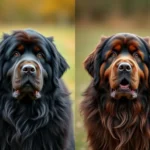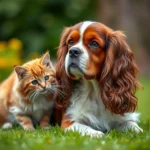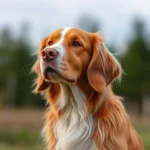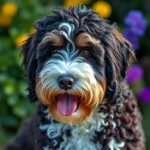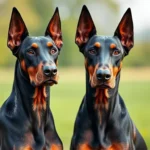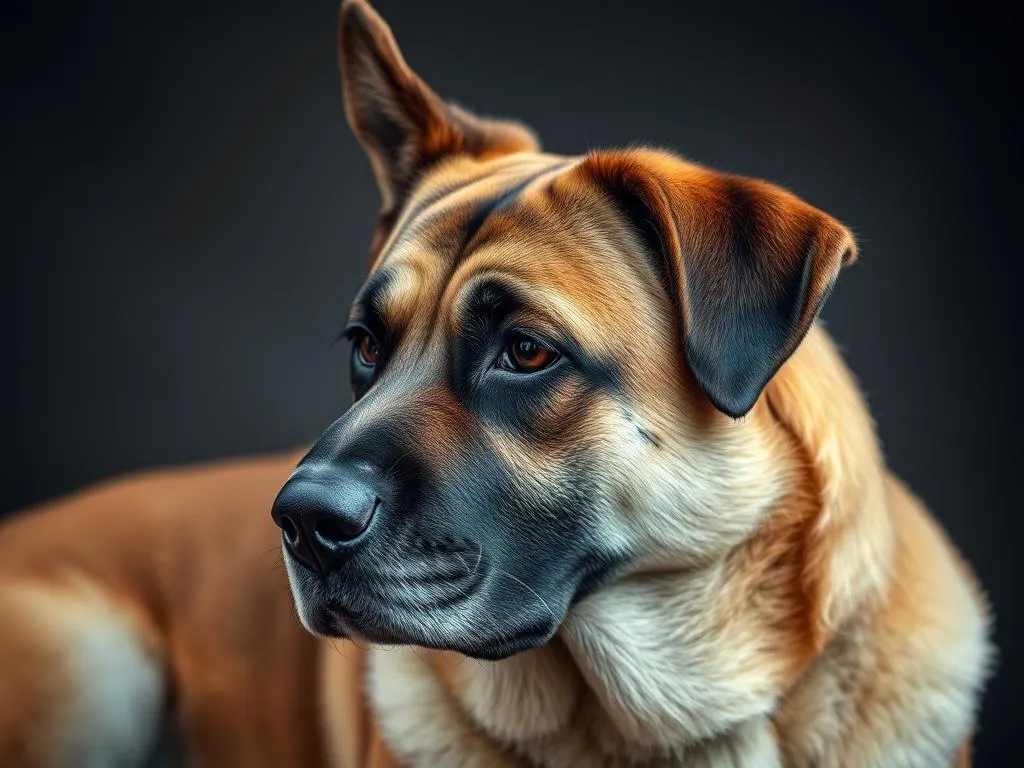
Introduction
When it comes to dog breeds, understanding the unique characteristics, history, and needs of each breed is vital for potential owners. Among these breeds, the Kangal Dog stands out as a remarkable guardian and companion. Originating from Turkey, the Kangal Dog has a rich historical significance and is known for its unique traits, making it a fascinating breed to explore.
History of the Kangal Dog
The Kangal Dog hails from the Sivas province in Turkey, where it has been an integral part of agricultural life for centuries. This breed was primarily developed as a livestock guardian, tasked with protecting sheep from predators such as wolves and bears. Kangal Dogs are revered for their bravery and intelligence, which have made them invaluable to shepherds.
In Turkish culture, the Kangal Dog is more than just a working animal; it symbolizes strength and loyalty. The breed has been celebrated in folklore and is often depicted in traditional art, highlighting its esteemed status in Turkish society.
Physical Characteristics
The Kangal Dog is known for its impressive size and strength. Adult males typically weigh between 110 to 145 pounds, while females range from 90 to 120 pounds. They stand about 28 to 32 inches tall at the shoulder, contributing to their formidable presence.
Coat Color and Texture
Kangal Dogs have a short, dense coat that is usually tan or fawn, with a black mask and dark ears. Their coat is weather-resistant, making them well-suited for the harsh climates of Turkey. The breed’s coat requires minimal grooming, but regular brushing during shedding seasons can help manage loose fur.
Distinctive Features
One of the most notable features of the Kangal Dog is its unique ear shape, with ears that hang down rather than stand erect. Their tails are thick and curled, often resting over their backs. Compared to similar breeds like the Anatolian Shepherd, Kangal Dogs have a more robust build and a larger head, which contributes to their authoritative appearance.
Temperament and Behavior
The Kangal Dog is known for its loyalty and protective instincts. These dogs are naturally inclined to guard their families and property, making them excellent watchdogs. They are usually calm and confident, but they can be wary of strangers, which is an essential trait for a guardian dog.
Socialization Needs
Early socialization is crucial for Kangal Dogs. Exposure to various people, environments, and other animals will help them develop into well-rounded adults. Without proper socialization, they may become overly protective or aggressive towards unfamiliar individuals.
Interaction with Children and Pets
Kangal Dogs are typically gentle with children and can be very affectionate. However, supervision is essential, particularly with younger kids, to ensure safe interactions. When properly socialized, Kangal Dogs can coexist harmoniously with other pets, although their strong prey drive may pose challenges with smaller animals.
Training Requirements and Challenges
Training a Kangal Dog can be challenging due to their independent nature. They require a confident owner who can establish clear boundaries and provide consistent training. Positive reinforcement methods work best, as harsh training techniques can lead to fear and aggression.
Health and Lifespan
Kangal Dogs are generally healthy, but like all breeds, they can be prone to certain health issues. Common concerns include hip dysplasia, elbow dysplasia, and certain genetic conditions. Regular veterinary check-ups and a balanced diet can help mitigate these risks.
Preventative Measures and Regular Care
Routine preventative care is essential for maintaining a Kangal Dog’s health. Vaccinations, parasite control, and dental care should be part of their regular health routine. Additionally, maintaining an appropriate weight through diet and exercise is crucial for their overall well-being.
Average Lifespan
The average lifespan of a Kangal Dog is between 12 to 15 years. Factors affecting their longevity include genetics, diet, exercise, and overall care. Providing a healthy lifestyle can contribute significantly to their quality of life and lifespan.
Living Conditions and Care
Ideal Living Environment
Kangal Dogs thrive in environments where they have ample space to roam and play. They are best suited for homes with large yards or rural settings, as they require room to exercise and fulfill their natural guarding instincts. Apartment living is not advisable for this breed.
Exercise Needs and Activity Levels
These dogs are active and require daily exercise to stay healthy and happy. Long walks, playtime in a secure yard, and mental stimulation activities are essential. Kangal Dogs enjoy structured activities like agility training, which can also strengthen the bond between the dog and its owner.
Grooming and Maintenance
Grooming the Kangal Dog is relatively straightforward due to their short coat. Regular brushing during shedding seasons will help reduce loose fur. Additionally, routine checks of their ears, teeth, and nails will ensure they remain healthy and comfortable.
Nutrition and Dietary Considerations
A balanced diet is crucial for the health of a Kangal Dog. High-quality dog food formulated for large breeds is recommended to support their growth and energy needs. Consulting with a veterinarian can help determine the best diet tailored to the dog’s specific health requirements.
Pros and Cons of Owning a Kangal Dog
Advantages
- Loyalty: Kangal Dogs are incredibly loyal and form strong bonds with their families.
- Protective Instincts: Their natural guarding instincts make them excellent watchdogs.
- Intelligence: Kangal Dogs are intelligent and can learn commands quickly with proper training.
Disadvantages
- Space Requirements: They need ample space to thrive, making them less suitable for small homes or apartments.
- Training Challenges: Their independent nature can make training more challenging, requiring experienced handlers.
- Prey Drive: Their instinct to chase smaller animals can pose challenges in multi-pet households.
Who Should Consider Owning a Kangal Dog
The Kangal Dog is best suited for experienced dog owners who can provide the necessary space, training, and socialization. Families with an active lifestyle and those living in rural areas will find this breed particularly rewarding.
Training and Socialization
Importance of Early Training
Early training is essential for Kangal Dogs to ensure they grow into well-mannered adults. Starting training and socialization at a young age will help them develop appropriate behaviors and reduce the likelihood of behavioral issues in adulthood.
Recommended Training Methods
Positive reinforcement techniques, such as treats and praise, work best when training a Kangal Dog. These methods not only encourage good behavior but also strengthen the bond between the dog and its owner.
Socialization Tips
To properly socialize a Kangal Dog, expose them to a variety of environments, people, and other animals. Puppy classes can be beneficial for early socialization and learning basic commands in a structured setting.
Common Behavioral Issues and Solutions
Kangal Dogs may exhibit behavioral issues such as excessive barking or aggression if not properly trained and socialized. Addressing these issues early with consistent training and social interactions can help prevent them from becoming problematic.
Kangal Dog in Popular Culture
Representation in Media and Literature
The Kangal Dog has made its mark in various media, often depicted as a symbol of loyalty and strength. Documentaries and articles showcasing their guarding abilities have contributed to their reputation as one of the best livestock guardian breeds.
Notable Kangal Dogs in History
There have been numerous accounts of Kangal Dogs performing heroic acts in protecting livestock and families. Their reputation as fearless protectors has made them a part of Turkish folklore, celebrated for their bravery.
Public Perception and Myths
Despite their positive attributes, there are misconceptions about Kangal Dogs, including their temperament and suitability as pets. Educating potential owners about the breed’s needs and characteristics is essential in dispelling these myths.
Conclusion
The Kangal Dog is a breed defined by its loyalty, strength, and protective instincts. Understanding these unique qualities is crucial for potential owners to determine if this breed aligns with their lifestyle. Responsible ownership requires a commitment to training, socialization, and care, ensuring that the Kangal Dog remains a cherished member of the family.
FAQs
What is the temperament of a Kangal Dog?
Kangal Dogs are known for their loyalty and protectiveness. They are naturally wary of strangers but are affectionate with their families.
Are Kangal Dogs good with children?
Yes, Kangal Dogs can be gentle and affectionate with children, but supervision is recommended to ensure safe interactions.
How much exercise does a Kangal Dog need?
Kangal Dogs require daily exercise and mental stimulation, such as long walks and playtime, to stay healthy and happy.
What health issues are common in Kangal Dogs?
Common health issues include hip dysplasia and elbow dysplasia. Regular veterinary care is important for maintaining their health.
Can Kangal Dogs live in apartments?
Kangal Dogs are not well-suited for apartment living due to their size and exercise needs. They thrive in homes with ample space.

